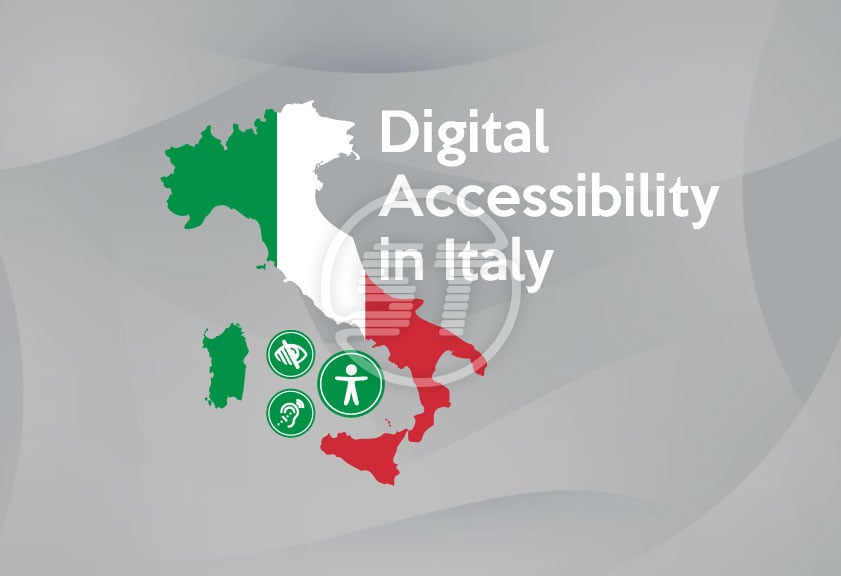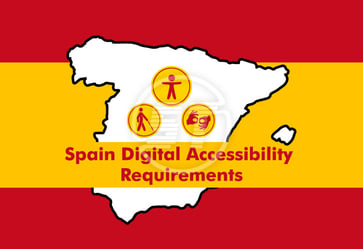Since the use of digital devices has increased to the next level, and online content availability and accessibility is crucial for everyone. Thus, Italy has its official law known as the Stanca Act or Law No. 4 of January 9, 2004 which ensures digital accessibility for all its citizens. The Stanca Act promotes accessibility by strict vigilance on public administration, government agencies, and all private sector organizations and their online products and services.
This law has been included in the official collection of Normative Acts of the Republic of Italian. All responsible organizations must observe the laws and help others to follow them. This article intends to understand the requirements of the Stanca Act.
YOU MIGHT ALSO LIKE: International Web Accessibility Standards
Stanca Act – What are the key requirements for a website to stay accessible in Italy?
All public and private organizations, regional municipalities, and government agencies ought to follow the requirements given by the Stanca Act:
- Websites and applications must be compatible with all assistive technologies.
- Organizations that invoice more than 500 million sales in the last three years ought to adhere to the Stanca Act.
- Educational institutions must have accessible resources and teaching tools to provide equal learning opportunities for every student.
- The goods and services procured by organizations are required to be accessible.
- The grants of public subsidies to private entities for the purchase of IT goods and services intended for use by employees with disabilities.
- Training employees to apply accessibility standard and maintain it is mandatory.
- Failure to comply with the Stanca Act results in penalties and loss of grants from the government. The penalties are decided by courts on collective agreements.
- The act gets updated with time. So, organizations should update their websites/applications regularly.
Read the official Stanca Act or Law no.4 of January 2004 document.
The European directive is an accessibility law applicable to all European Union nations. However, it is not a strict regulation, rather it sets out a goal for all EU states to achieve accessibility. So, every individual nation has a right to decide how they will achieve accessibility goals and Italy has made the Stanca Act to ensure accessibility.
The EU Directive is based on WCAG standards and so does the Stanca Act. Thus, each organization in Italy must conform to WCAG success criteria and meet the accessibility deadline by 2025 (the deadline is issued by the EU for all member states).
Why comply with the Stanca Act?
Accessible websites are the reason behind several advantages that organizations reap. Such as,
- Exceptional user experience: It is one of the major aftermaths of accessibility implementation and improved user experience uplifts overall conversions.
- User base expansion: Accessibility helps websites reach out to a wider user segment including those with disabilities.
- Improved brand/corporate image: Digital accessibility commitment demonstrates the organization’s focus on not supporting discrimination against disabled users, which is an added advantage to its image.
YOU MIGHT ALSO LIKE: CVAA (Communications and Video Accessibility Act)
How to comply with the digital accessibility law in Italy?
Implementing accessibility in websites/applications implies creating designs that adhere to WCAG standards.
- Select technologies that support accessibility. Now, there are myriad platforms that have built-in accessibility features, for example, Adobe Commerce, Drupal, WordPress, etc. Such technologies have semantic code, responsive themes, navigation controls, and many other key features.
- Avoid overdoing it, especially with colors. Sufficient color contrast is needed to provide a readable view for users with visual impairments.
- Websites must have smooth and logical keyboard navigation to allow access to users with mobility issues.
- Images require alt text and accurate descriptions so that screen readers can explain them correctly.
- The content structure should be well-organized including a header hierarchy. It is important from a navigation point-of-view. Adding a table of contents is also a correct way to create a clear semantic structure.
- Make sure to provide accessible PDFs and other documents.
- Once the design is ready, thorough testing (automated and manual) is essential. Testing ensures that accessibility implementation has been done correctly and there is zero to the minimal scope for accessibility issues.
Wrapping up
In a nutshell, digital accessibility is required not for users with disabilities but for everyone who uses online content in some or the other way. Thus, improve your corporate image by implementing suitable accessible elements and components on your website.
Skynet Technologies, a proud associate member of the International Association of Accessibility Professionals (IAAP) and a recognized participant in W3C takes immense pride in its valuable contributions to the global accessibility community.
Whether you require quick accessibility improvements or a complete overhaul of your website’s accessibility, you can count on us to meet your requirements. The range of website accessibility remediation services covers every aspect of website accessibility, including design, audit, consulting, remediation, support, document remediation, VPAT report, accessibility statement, accessibility commitment letter (ACL), and ongoing maintenance.
To further the cause of digital accessibility and inclusivity, please do not hesitate to reach out to us either at hello@skynettechnologies.com or request a website accessibility service quote . Our mission revolves around aiding you in enhancing the accessibility of your digital presence and improving inclusivity for all.

